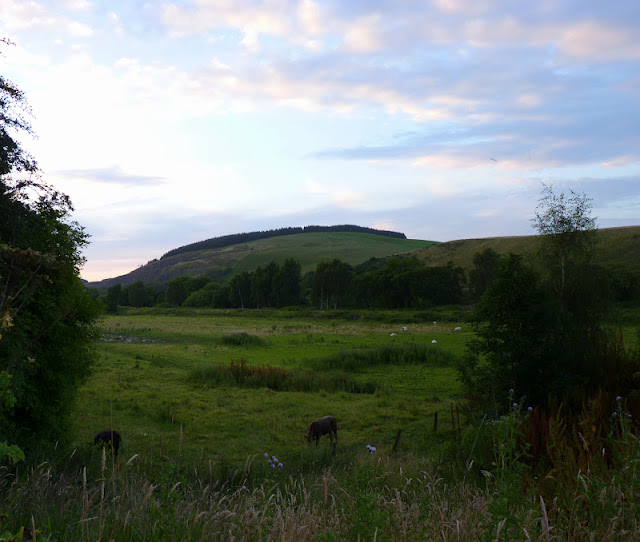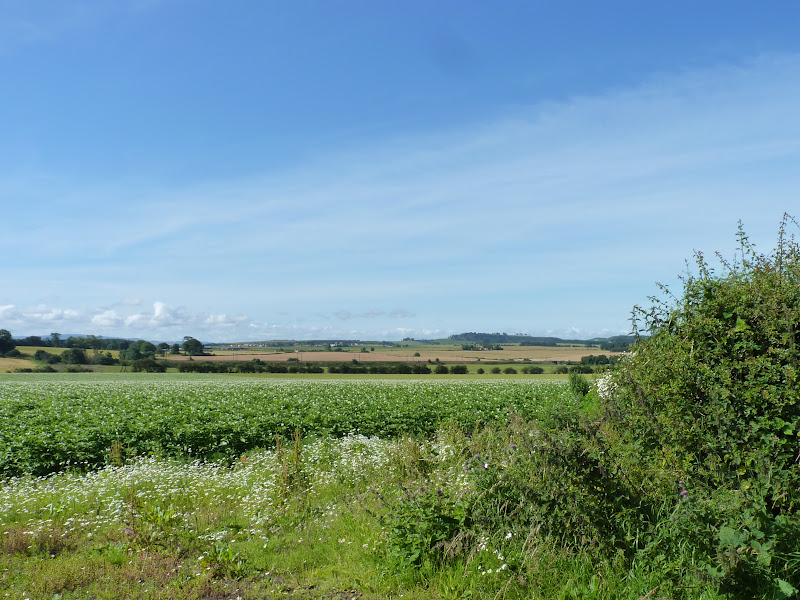 |
Rowan Berries : Acrylic paints,beads and stitching on linen (75cm x 60cm). |
 |
Detail |
 |
Detail : photos (above) by owner. |
 |
 |
Rowan Berries. |
 |
 |
Rowan trees in a Community Woodland. |
 |
Rowan Berries : Acrylic paints,beads and stitching on linen (75cm x 60cm). |
 |
Detail |
 |
Detail : photos (above) by owner. |
 |
 |
Rowan Berries. |
 |
 |
Rowan trees in a Community Woodland. |
 |
River Tweed at the village of Yael near Galashiels,Scottish Borders. Driving around country roads in this area,looking for a woodland walk,my friend Morelle and I found a ramblers route leading to the hills.The path we took is part of the Southern Upland Way,which traverses southern Scotland. Before the days of railways this was a drove road used by drovers to move cattle to markets across the country. |
 |
The Tweed is a well known salmon fishing river. |
 |
We walked along a road beside the river before taking the path to the hills. |
 |
Roadside vegetation. |
 |
 |
 |
Southern Upland Way |
 |
Birch Trees |
 |
Dry stone wall |
 |
Hay field |
 |
Conifer plantations |
 |
 |
 |
Scottish Bluebells (Harebells) In folklore they are linked with magic and called witches thimbles and fairy bells. |
 |
 |
Fields at dusk. The tree lined rounded hilltops define the landscape of this area. |
 |
 |
Feathers,petals and rowan berries collected in my garden. |
 |
This ceiling depicting the Tree of Life was partly designed by Pheobe but not painted by her. |
 |
The baldacchino designed by the architect of the building. This is really beautiful,like an elaborately decorated cake. |
 |
Rounded arches characteristic of the Romanesque style. |
 |
 |
 |
 |
 |
 |
 |
At the Second Coming of Christ an angel is assigned to each soul to assist them on their journey. |
 |
The former church,designed in the Neo- Romanesque style by architect Sir Robert Rowland Anderson was completed in 1885. |
 |
The buildings opposite are part of the city centre New Town development dating from around 1800. |
 |
The termination of the nave is of semi-circular design,common in Romanesque architecture. |
 |
 |
John Muir in 1907 : image source Wikipedia John Muir was born on 21st April 1838 in the town of Dunbar in East Lothian. In 1849 his father,a local grain dealer,decided to emigrate with his family to America where John with his parents and seven siblings settled on a farm in Wisconsin. He never returned to Scotland. Throughout his life he was a man of many talents,farmer,botanist,geologist,explorer,mountaineer,nature conservationist and writer. Today the effects of his pioneering environmental and conservation work continue in the creation of National Parks and Conservation Areas around the world.This Country Park is close to his childhood home and it's very possible that as a boy he explored the beaches I visited. Writing about his childhood years he said, "When I was a boy in Scotland I was fond of everything that was wild.I loved to wander in the fields to hear the birds sing,and along the shore to gaze and wonder at the shells and the seaweeds,eels and crabs in the pools when the tide was low". |
 |
Woodland path |
 |
Maddy and Louis.......... ready to go! |
 |
 |
Oak sapling |
 |
 |
Scots Pine canopy |
 |
 |
Louis on the Coastal Path |
 |
 |
 River Tyne ,Dunbar is on the far side of the estuary. The rocks in this area is of great interest to geologists. |
 |
North Sea |
 |
 |
 |
 |
 |
 |
 |
Bracken and Brambles (Blackberries) |
 |
Wild Rhododendrons |
 |
Potato field outside the Park. The countryside around Dunbar is rich arable farmland well suited for growing grain such as barley,wheat and oats. Below are some views of the East Lothian landscape. |
 |
 |
 |
 |
 |
 |
Potato plants in bloom |